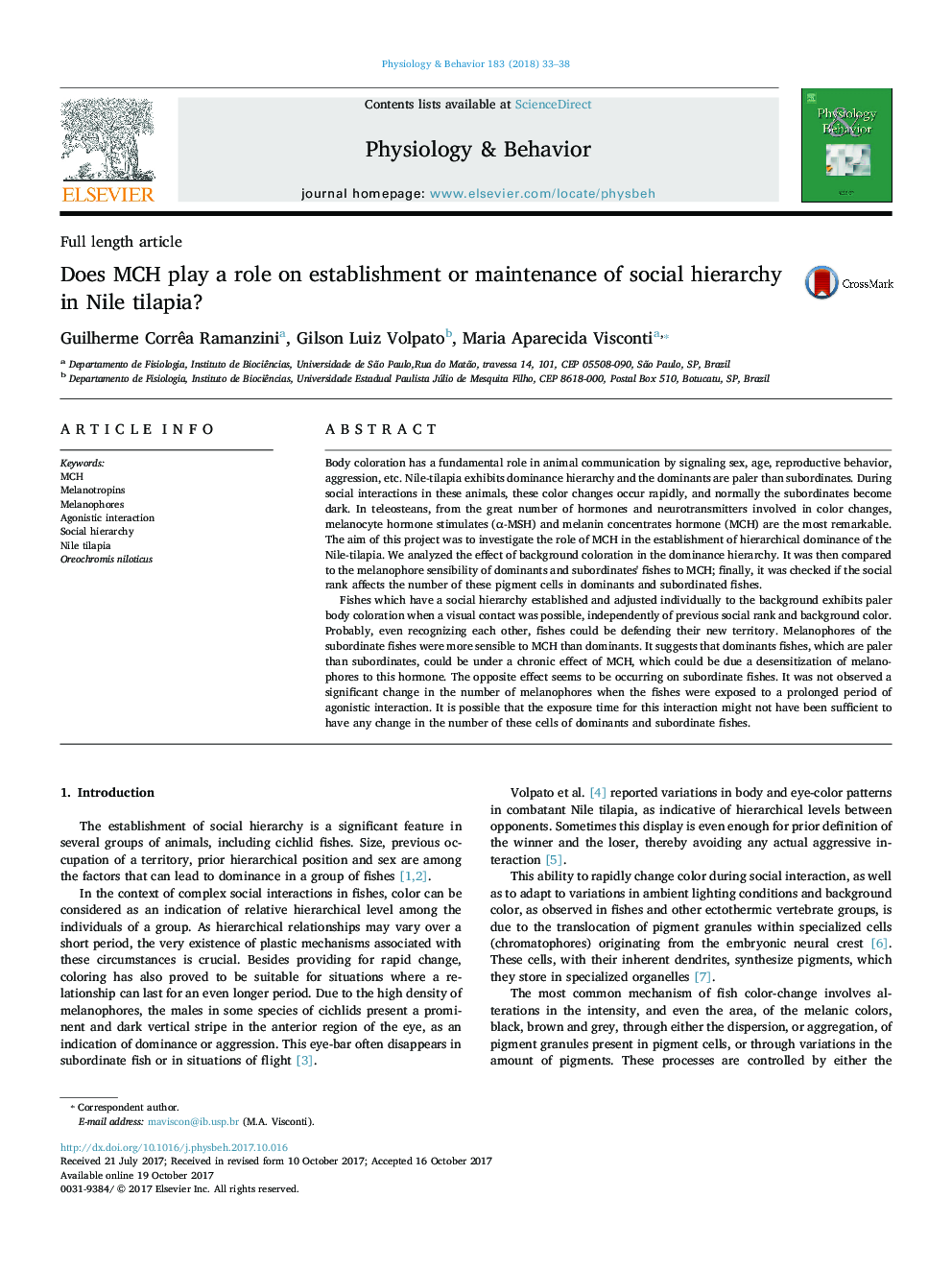| Article ID | Journal | Published Year | Pages | File Type |
|---|---|---|---|---|
| 8650740 | Physiology & Behavior | 2018 | 6 Pages |
Abstract
Fishes which have a social hierarchy established and adjusted individually to the background exhibits paler body coloration when a visual contact was possible, independently of previous social rank and background color. Probably, even recognizing each other, fishes could be defending their new territory. Melanophores of the subordinate fishes were more sensible to MCH than dominants. It suggests that dominants fishes, which are paler than subordinates, could be under a chronic effect of MCH, which could be due a desensitization of melanophores to this hormone. The opposite effect seems to be occurring on subordinate fishes. It was not observed a significant change in the number of melanophores when the fishes were exposed to a prolonged period of agonistic interaction. It is possible that the exposure time for this interaction might not have been sufficient to have any change in the number of these cells of dominants and subordinate fishes.
Keywords
Related Topics
Life Sciences
Biochemistry, Genetics and Molecular Biology
Physiology
Authors
Guilherme Corrêa Ramanzini, Gilson Luiz Volpato, Maria Aparecida Visconti,
